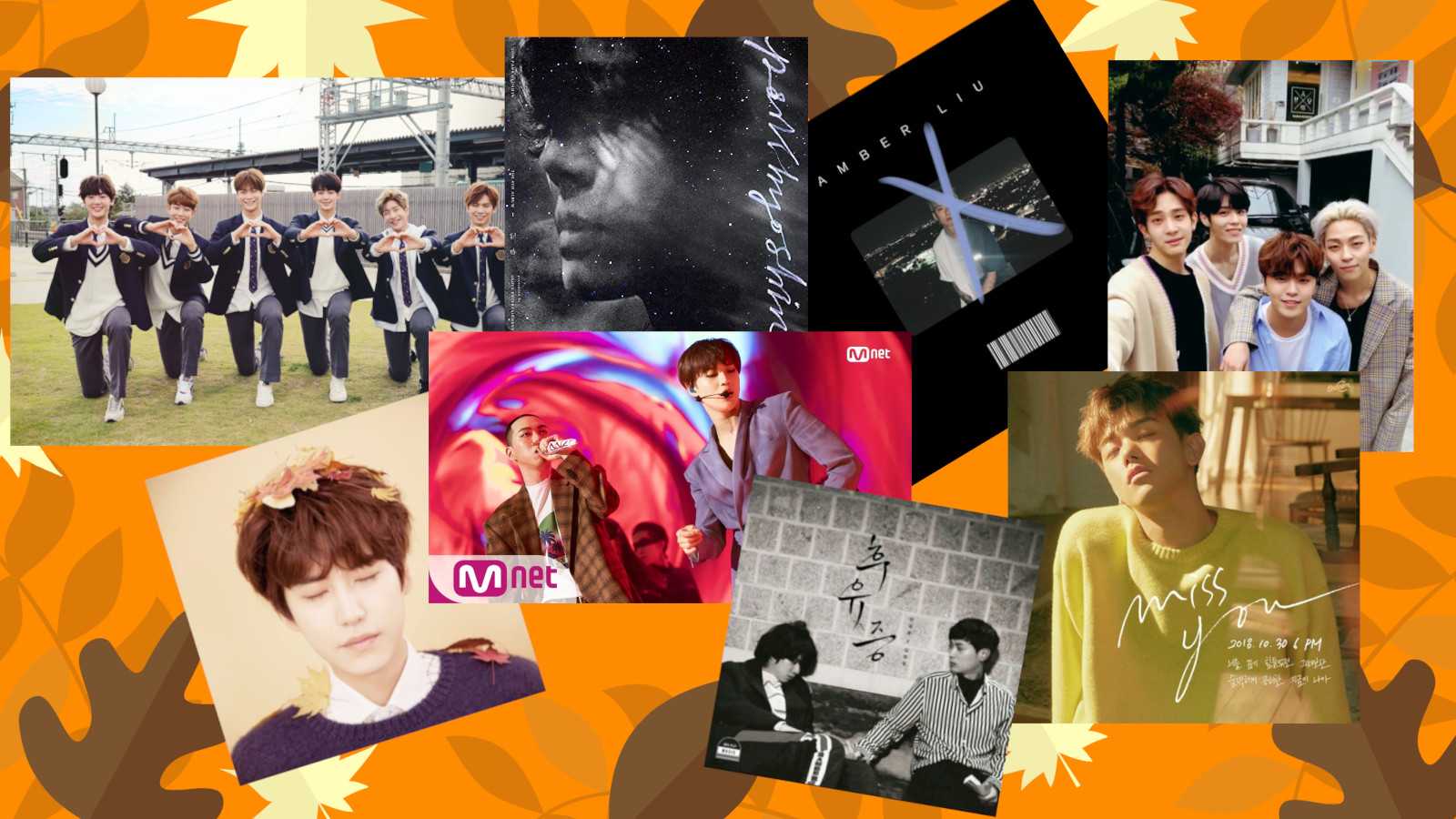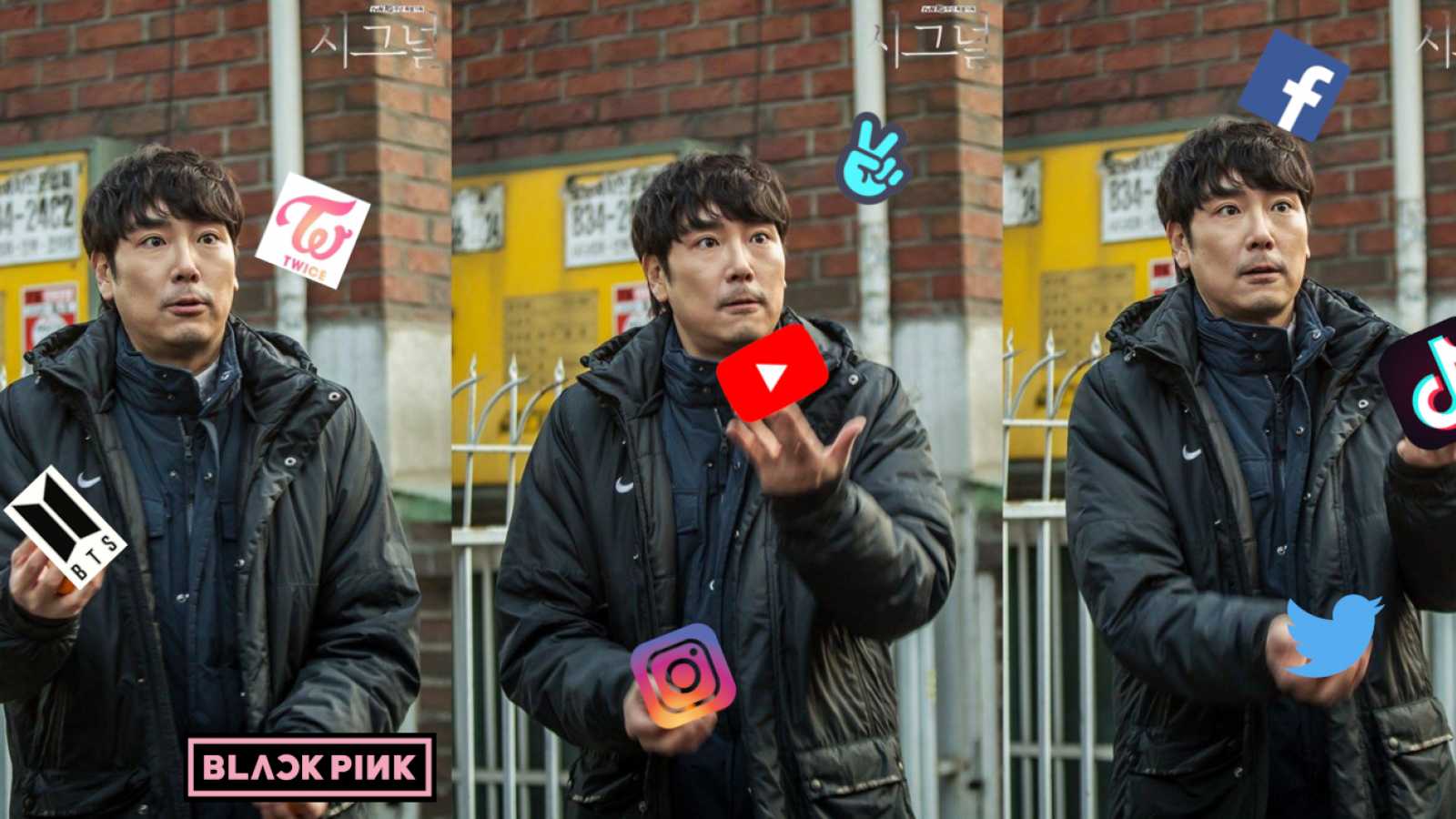The Flowers of Passion: Stories from the Japanese Underground Idol Scene
Going underground.


Idols are synonymous with Japan’s music industry. This unstoppable juggernaut of ‘kawaii’ popularity and financial power rakes in untold billions of yen each year. But what goes on at the grassroots, far from the brightly lit TV studios and sold-out arena tours, in basement live houses and tiny, cramped venues across Tokyo? This is where chika idols, or underground idols, carve out their niche, exploring multivarious musical genres.
Derek Vasconi is an American who fell so far down the idol rabbit hole after discovering hardcore idol group Guso Drop that he relocated to Tokyo, where he’s been involved in the chika idol scene for the last few years. He’s thrown himself into the business, working on the staff of idol groups, running an internet business, Idol Underworld, selling idol merchandise internationally as well as getting into promotion and production. Now, he’s channeled his seemingly boundless enthusiasm into creating his directorial debut "The Flowers of Passion", a five-part documentary series that examines Tokyo’s chika idol subculture.
It’s a corner of the music industry that doesn’t attract much of a media spotlight, even in Japan. The internet and social media have made it easier to follow chika idol goings-on from afar, but it’s first and foremost a live experience. Vasconi’s series brings viewers into the venues, looking behind the scenes where we witness the creativity and sheer hard work of being at the foot of the idol stardom ladder.
The documentary series is arranged thematically, with each episode addressing a different aspect of the chika idol’s life and work, and for the most part, each episode sticks to its point. After an introductory episode, the series takes a look at the creative process, the fans, the hard graft of being an idol and wraps everything up with the live experience. The capricious, impermanent nature of the subject matter has affected the making of the series somewhat. Various spanners were tossed into the works, like unexpected graduations and groups who'd agreed to participate suddenly pulling out. These twists required some chopping and changing which may account for some episodes staying on point better than others.
The first episode serves as an introduction, both to the idols who’ll be the subject of the series and to the concept of idols, but that context setting section is somewhat cursory and simplistic. We’re bounced from the original idol, Sylvie Vartan way back in 1964, straight to 2005, completely bypassing the ‘golden age’ of idols in the '80s and '90s and it’s never really explained why a French actress should strike such a chord in Japanese culture and inspire an entire musical genre.
The intro hits the main points of the developments that gave rise to the underground idol scene, but that’s about all. Idol supergroup AKB48 created a new model for the idol business, changing the concept of an idol from an elevated figure worshipped from afar to that of someone you could meet and interact with, and the arrival of BiS smashed the conventions of idoldom and created the space for the alternative groups that populate the chika idol scene to flourish.
Granted, this isn’t a documentary on the history of idols, but examining a cultural phenomenon requires its context within society to be set and "The Flowers of Passion" comes up a little short in this regard. The narration to this section is provided by idol Nayuta Aku and her childlike voice only reinforces the impression that we’re getting the very simplest version of events.
The first idol group we’re introduced to is one that actually disbanded five years ago but perhaps epitomises the chika idol scene more than any other, BELLRING Shoujo Heart. Formed in 2012, the crow-winged idols became a massively popular act on the Tokyo chika idol circuit. Despite their often shonky performances, they built a hugely enthusiastic and rambunctious fanbase, which underlines the point that anybody unfamiliar with how the chika idol business works would find counterintuitive: you don’t necessarily have to be the most polished performer to be successful as an idol.
Vasconi doesn’t just interview idols and BELLRING Shoujo Heart’s producer Koji Tanaka’s turn on screen is certainly illuminating. He laughs recalling how “they weren’t good on stage” and probably had only two good performances in four years until they folded in 2016, but it’s the effort that the fans respect. Former BELLRING Shoujo Heart member Asakura Mizuho uses the phrase “issho kenmei” to describe the work of being an idol. The subtitles don’t quite convey the significance of the term, but it embodies the Japanese approach to life of doing something, even the most mundane tasks, to the absolute best of your ability and striving to continuously improve through discipline and perseverance.
It’s a point that’s echoed throughout the series, particularly in the fourth episode which focuses on the ‘idol grind’. We see many of the idols featured having to fit the relentless schedule of rehearsals and live performances around university studies, as well as the part-time jobs that supplement their meagre idol earnings. One might expect a behind-the-scenes documentary to take some of the shine off the showbiz glamour, but "The Flowers of Passion" shows just how little glamour and how much graft is needed to make it.
The idols featured in the documentary already have an established relationship with Vasconi, selling their merchandise internationally through his website, Idol Underworld. This connection is something of a double-edged sword, as he is possibly more attached to his subjects than a documentary filmmaker ought to be. There’s no danger of showing anybody in a bad light.
On balance, the familiarity and trust established through existing relationships has paid huge dividends in the interviews. The idols Vasconi has chosen to follow aren’t the typical ‘kawaii’ teens one might normally expect, but more mature individuals like Asakura Mizuho, who's been an idol for nearly a decade and Usakura Beni, an idol-turned-producer who aims to make a long-term career in the music business. As a result, we’re rewarded with perceptive and candid reflections on the nature of their work, as well as some very personal revelations that give an insight into why they pursue this particular career, all refreshingly free of bland, record label press officer-managed answers.
Probably the most interesting character featured in the series is 14th Generation Toilet Hanako-san, who really wasn’t made for the conformity of Japanese society and has found her place playing the angry ghost of a murdered girl from urban legend that haunts a toilet stall. It’s hard to reconcile the softly spoken, sweet natured Hanako-san we see in the interview with the screaming, head-banging banshee who pelts her audience with the sloppiest foodstuffs and spews fruit juice all over them. She may well be a ‘method idol’, spending most of her life in character to some extent, but her interview gets beneath the façade to reveal some illuminating truths.
The real star of the show though is Chihiro, the founder and leader of Merry Bad End. She’s the very first idol we meet and her a capella version of the Merry Bad End song Restart opens each episode. The series neatly calls back to this song in the final episode as it’s performed at Chihiro’s birthday live, pointing out its meaning of overcoming difficulties and starting over, which sums up her story perfectly. Of all the performers featured, Chihiro’s is the strongest narrative arc and provides the most emotionally powerful interview of the series. The documentary reveals an ordinary young woman who has found a remarkable strength of character within to build her idol dream from scratch with her own two hands.
The episode examining fandom is the shortest, but also the most focused episode. The idols fans, or ‘otaku’, that follow them don’t have the best reputation and what media coverage they do get is often negative in tone. A notable recent example is "Tokyo Idols", a documentary by feminist filmmaker Kyoko Miyake which portrayed fans as obsessive, socially awkward man-babies with a prurient interest in young female idols, and not necessarily their music. While Vasconi hasn’t set out to directly refute this viewpoint, his documentary does give a more rounded view of the relationship between idols and their fans.
Patrick Galbraith, a lecturer at Tokyo’s Senshu University, has made a career of examining otaku culture and he brings some academic weight to the documentary. He questions the preconceptions around idols and otaku, and recounts his experience of studying the subculture, even making a sideways admission of his own seduction by the feeling of community around the chika idol scene.
What comes through strongly in this episode, and throughout the series, is the idea of idols as a life support system: the fans support the idols, helping them to realise their ambitions and the idols provide support to their fans. Galbraith describes the relationship in terms a westerner would understand, but it has a strong sense of the Japanese concept of ‘ikigai’, the thing that makes life worth living. In a city as vast and impersonal as Tokyo, being part of a community, no matter how small or counter-cultural, can be a literal lifesaver.
The documentary reveals how idols themselves have been beneficiaries, as well as providers, of these supportive relationships. Usakura Beni, Hiiro Moe and Chihiro all describe how being an idol fan helped them through difficult times. Hanako-san reveals how she spent most of her life feeling like a misfit, and it was the devotion and support of her fans that helped rebuild her self-esteem.
It’s a symbiotic relationship, built and strengthened over time. Yuka of Lilii Kaona admits her surprise at the strength of relationship between performers and fans, especially compared to her career as an actress. Idols perform for their fans week in, week out, often several times a week. Part of every show is a ‘buppan’ session where fans meet the idols, and through various modes of incentivised merchandising, earn a little face time with their favourites.
It’s another aspect of chika idol culture that’s rarely caught on film and Vasconi includes a few of these meetings. Some fans involved are clearly his friends, which probably made it easier to get permission to use the footage, but it’s a bit iffy when a documentary filmmaker should ideally be striving for authenticity. It serves the purpose of demonstrating a typical buppan session though and how polite, respectful and good-humoured these interactions usually are.
There’s an attempt by Vasconi to link chika idols with Japanese culture on a broader basis, making a comparison of live houses and idols with temples and the gods that reside within them. The analogy is rather forced though, and, rather awkwardly, is immediately contradicted by his interviewees.
The ‘mix’ chants, the co-ordinated shouts of "Tiger, Fire, Cyber, Fibre, Diver, Viber, Jaa Jaa!!" you’ll hear on chika idol live footage, are likened to the ‘nirei nihakushu ichirei’ ritual of clapping hands at a temple In reality, mix most likely evolved from ‘oendan’, the elaborate co-ordinated cheering at Japanese sporting events
He also conflates 'ema', the small wooden tablets sold at temples for visitors to write wishes on, with the 'cheki' photos that idols sell at their post-show merchandise sessions. But for fans, a cheki represents a memory, not a wish, and resonates with the Japanese culture of making memories and embodying them in a gift.
XOXO Extreme’s Hiiro Moe perceptively makes this point about the importance of the cheki as part of the chika idol experience. In the digital age, when fans can interact with idols via social media from halfway across the world, it’s the 1940s technology of the Polaroid photo that still rules. The cheki is a physical object created at the time of meeting your favourite idol and held by her as she inscribes a personal message. It becomes a treasured memory which will be collected into folders, bulging with these captured moments of human connection.
Maybe the slightly off beam attempts to link idols to wider Japanese culture are a reflection of Vasconi’s status as a relative newcomer to Japan. Although with Patrick Galbraith on board, he could maybe have been given a better steer on the subject, "The Flowers of Passion" is largely framed as a ‘slice of life’ piece rather than a cultural investigation, and it certainly works in that respect.
There’s a generous amount of live footage throughout the documentary which is a big selling point, as some of the groups featured don’t have much live video out there on the internet. It’s a rare treat to see 14th Generation Toilet Hanako-san immortalized on film as the vengeful spirit promising bloody retribution for anybody that videos her live performances. Vasconi might have thought better of filming her show after all, given the total splattering with banana milk and noodles he and his camera had to endure.
The live footage is well-shot, especially considering the poor lighting Vasconi had to work with, but the sound suffers for being recorded through the camera mic rather than the mixing desk. Spoiled as we are today by live DVDs with multi-camera coverage and fast-paced editing to pump up the excitement, the “one man and his camera” approach tends to expose the shoestring nature of the production budget and leaves things feeling somewhat static. The most effective live section was NaNoMoRaL’s high energy song Searchlight, intercut with interview footage that revealed some of the charming relationship between irrepressibly cheerful idol Amamiya Miku and her odd duck of a producer/co-star Paseli-chan. It’s a lot punchier than the sequences of full songs or back-to-back tracks which drag slightly in comparison.
On the other hand, this style of filming captures an authentic fan’s-eye view, giving a real sense of the dark, sweaty venues and just how close the performers and audience get during a show. Being free to roam with a handheld camera also allowed Vasconi to grab some fascinating backstage shots, granting us an 'access all areas' pass to these cramped and chaotic live houses, including one where artists are left with nothing but a stairway to use as a dressing room.
One prickly issue that might hinder "The Flowers of Passion" from reaching a wider audience than the established chika idol fanbase is the cost. The hardcore fans, accustomed as they are to paying over the odds for Japanese CDs and merchandise, with shipping and proxy fees lumped on top, are probably more willing to part their hard-earned cash. The physical DVD version is marketed as a collector’s item, which comes at a price that anybody with a casual interest might balk at. The streaming options work out a good deal cheaper, and you get more than five hours of content, but it’s still somewhere north of a bargain.
For hardcore international chika idol fans, "The Flowers of Passion" is a must-see. There’s plenty here for them to get their teeth into, whatever their taste in music, and the film offers an authentic up-close view of the chika idol scene that they wouldn’t get without actually visiting Japan. The subtitling effectively makes it a bilingual series so it should also appeal to Japanese otaku for the backstage stuff even they wouldn’t get to see normally.
Much like Chihiro, Derek Vasconi has overcome the odds to accomplish his ambition. "The Flowers of Passion" looks far better than it has any right to, given the limitations of the equipment used to film it and the available budget. Any photographer will tell you it’s the eye, not the camera that makes the difference and Vasconi has shown that he has the makings of a documentarian. There are a huge number of moving parts to wrangle in making a film, and that's before you even get into the cat-herding of dealing with idols and their management, and Vasconi has pulled off the juggling act of producing, writing, filming, directing and even co-writing the background music. "The Flowers of Passion" is an impressive effort for a first time filmmaker that shines a rare spotlight on a fascinating corner of Japan's music industry.
"The Flowers of Passion" is available for rental and purchase digitally here, and it can be purchased on DVD from Idol Underworld here. To learn more about the documentary series and the inspiration behind it, check out our recent interview with Derek Vasconi.





Review Exclusive
A great victory for Japan's biggest independent idol group.

Review Exclusive
Going underground.

Review
Tentenko releases her eponymous album, Tentenko, a vibrant and eccentric music journey that will delight fans and music lovers of noise music and 80's synth.

Review
Pop-metal trio LADYBABY make their mark with this ode to Japanese pop and consumerism.